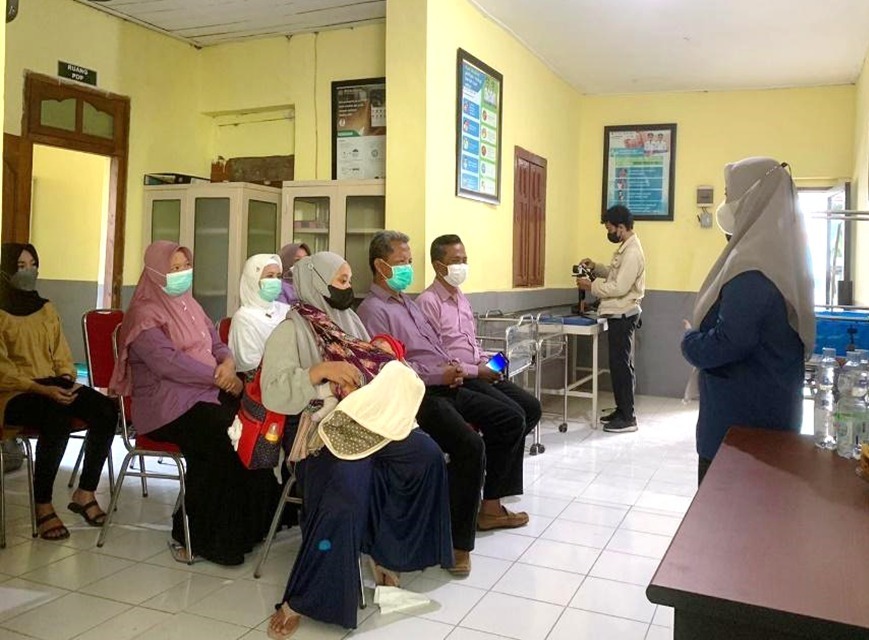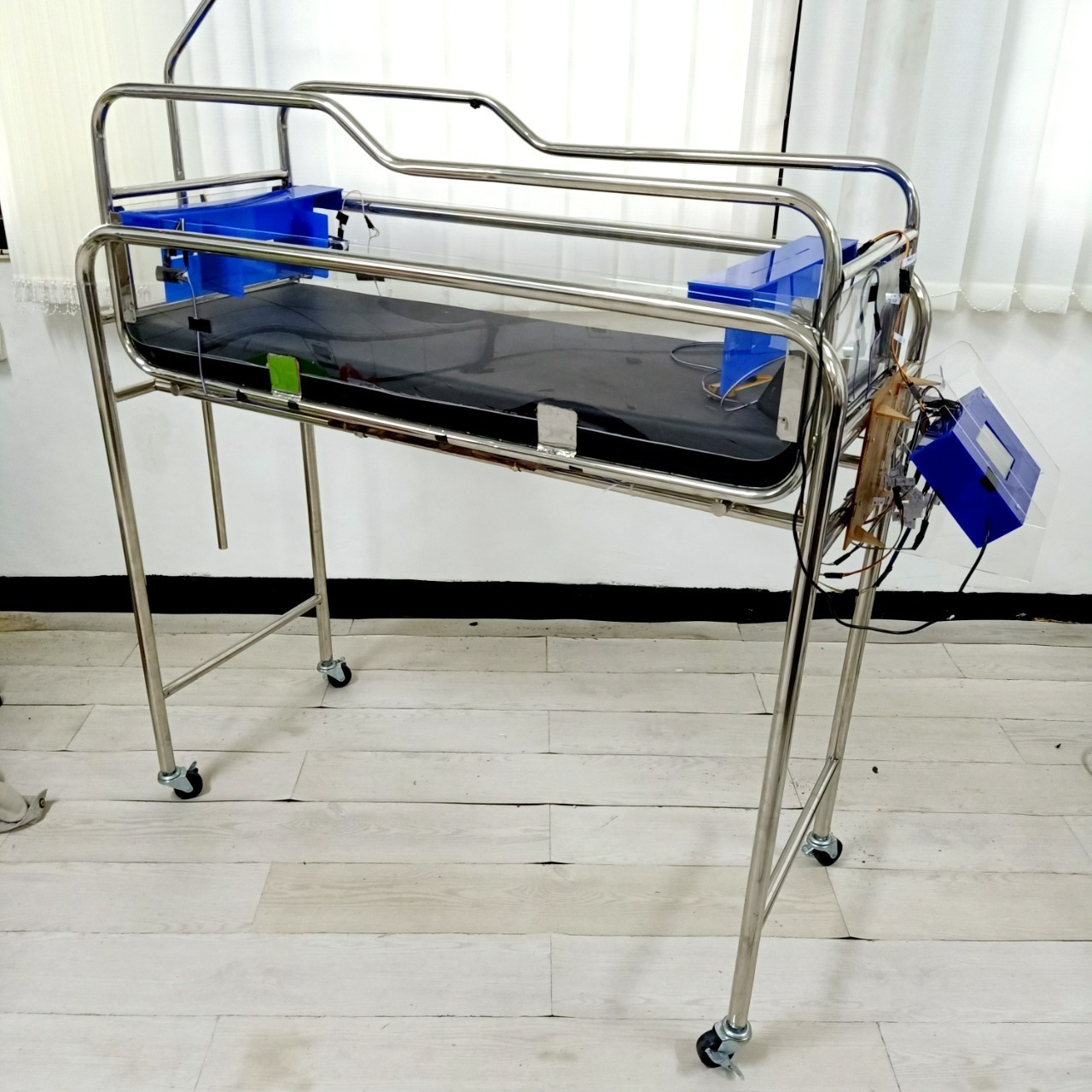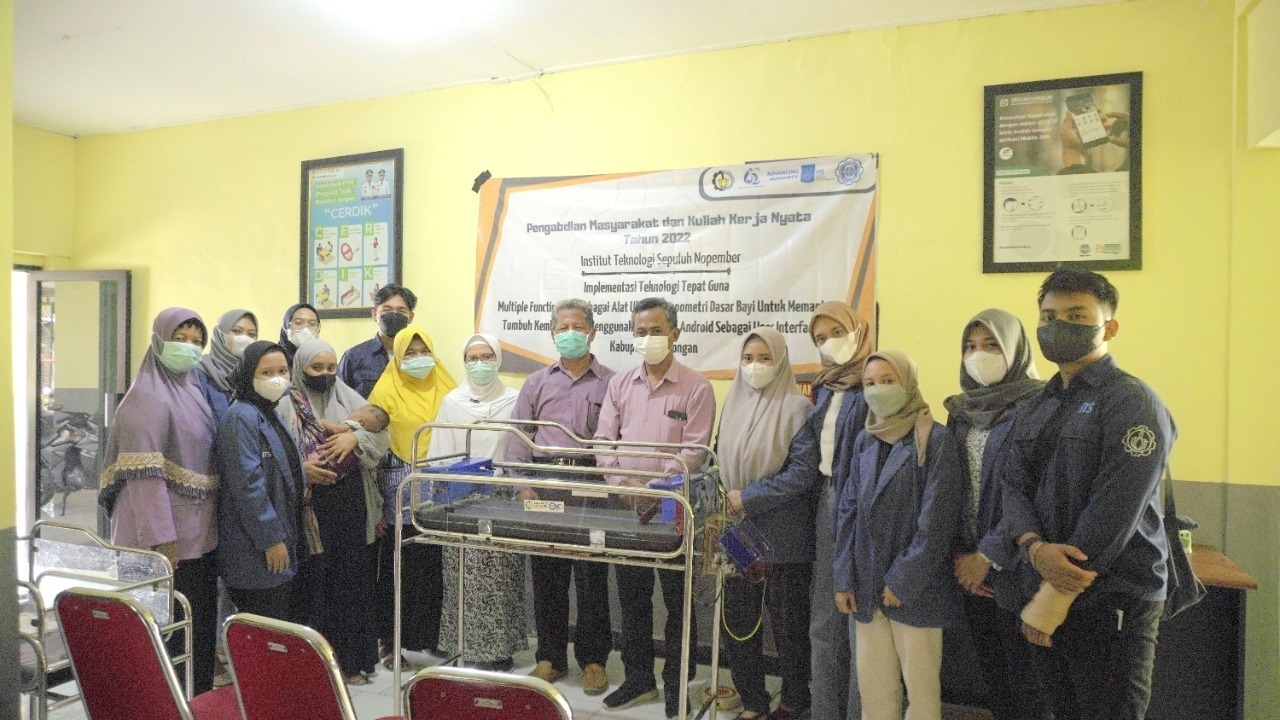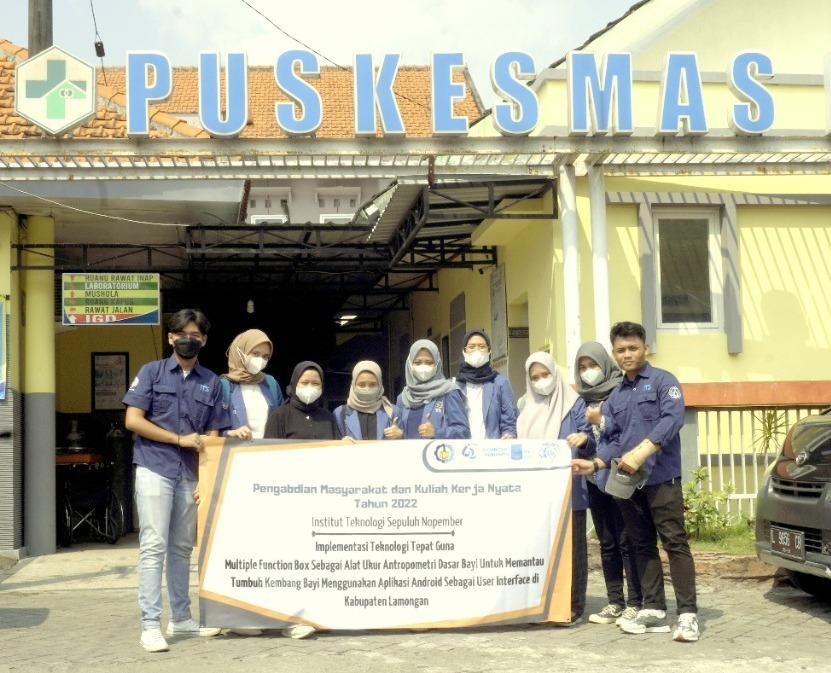ITS Abmas Team Designs Digitazion Tool to Integrate Anthropometric Data

Introduction of digital anthropometric tools by the ITS KKN Abmas Team to health workers at the Bluluk Health Center, Lamongan
ITS Campus, ITS News – Basic anthropometric measurements of infants usually carried out in several health centers still use conventional methods. To improve the efficiency of measurement and data collection, the Community Service Real Work Lecture (KKN Abmas) team from Institut Teknologi Sepuluh Nopember (ITS) designed an essential anthropometric measuring instrument for babies automatically.
As the team leader, Ir Ahmad Fauzan ‘Adziimaa ST MSc explained, anthropometric measurements are basic body measurements of babies that health workers usually carry out. The measured variables included weight (BB), height (TB), head size, baby’s temperature, etc. The number of measurements, if done one by one, will take a long time.
The activity of the ITS KKN Abmas team was implemented at the Bluluk Health Center, Lamongan. At the Puskesmas, the measurements’ results have yet to be compiled in a digital database. From these weaknesses, the KKN team created an essential anthropometric measuring instrument for babies with a digital feature called the Multiple Function Box.
According to the lecturer, familiarly called Fauzan, the device has a model and can function as a baby bed. The installed features include performing basic anthropometric measurements of babies with all four variables simultaneously and monitoring the measurement results through the Android application.

Multiple Function Box, an essential anthropometric measuring instrument for babies with digital features created by the ITS KKN Abmas team
The components used in this tool generally use sensors that work to measure quantities. Among them are a load cell sensor that measures the baby’s weight, the HC-SR04 ultrasonic sensor to measures the length and circumference of the baby’s head, and the MLX90614 sensor to measure the baby’s temperature.
To process the data, said Fauzan, this tool uses the Arduino Mega 2560 Microcontroller. Then, the Thin Film Transistor Liquid Crystal Display (TFT-LCD) component is used to display the measurement results on the tool. “To send data to the database, there is an ESP32 which functions as a sender of data from the device to the android interface,” said the lecturer of the Instrumentation Engineering Department.

The ITS Abmas KKN team when handing over the Multiple Function Box tool to health workers at the Bluluk Health Center, Lamongan
Fauzan and his team created a Multiple Function Box with students from his department using stainless and acrylic materials. This material was chosen because it conforms to the standards of the health center. “On the base of the baby crib, there is also a sponge covered with synthetic leather so that the baby’s body lying does not hit the hard base. This material was also chosen because it is easy to clean,” he explained.
After the tool is designed, continued Fauzan testing and analysis of the measurement system are carried out; when it is by the expected specifications, the device is implemented. This tool works simply by placing the baby in the crib. After that, the value can be directly displayed on the LCD. “The measurement results are directly collected in the database and can be monitored directly through the Android application,” he explained.

The ITS KKN team consisting of students from the ITS Instrumentation Engineering Department while conducting the Abmas KKN at the Bluluk Health Center, Lamongan
The creation of tool innovations brought by the ITS team was also accompanied by the intelligent use of tool technology for health workers at the Bluluk Health Center. Fauzan admitted that the activities carried out during August were enthusiastically followed by the community.
He hopes that the presence of this tool can improve anthropometric measurement services, especially during integrated service post activities (posyandu), so that parents can take measurements quickly. In the future, the ITS Abmas KKN team plans to educate other health centers so that the community can also feel the benefits of these tools. “Maybe in the future, the accuracy and innovation can be improved,” he said at the end. (ITS Public Relations)
Reporter: Fatima Az Zahra
Related News
-
ITS Wins 2024 Project Implementation Award for Commitment to Gender Implementation
ITS Campus, ITS News —Not only technology-oriented, Institut Teknologi Sepuluh Nopember (ITS) also show its commitment to support gender
October 07, 2022 20:10 -
ITS Professor Researched the Role of Human Integration in Sustainable Architecture
ITS Campus, ITS News –The developing era has an impact on many aspects of life, including in the field
October 07, 2022 20:10 -
ITS Sends Off Group for Joint Homecoming to 64 Destination Areas
ITS Campus, ITS News — Approaching Eid al-Fitr, the Sepuluh Nopember Institute of Technology (ITS) is once again facilitating academics who want
October 07, 2022 20:10 -
ITS Expert: IHSG Decline Has Significant Impact on Indonesian Economy
ITS Campus, ITS News — The decline in the Composite Stock Price Index (IHSG) by five percent on March 18,
October 07, 2022 20:10
